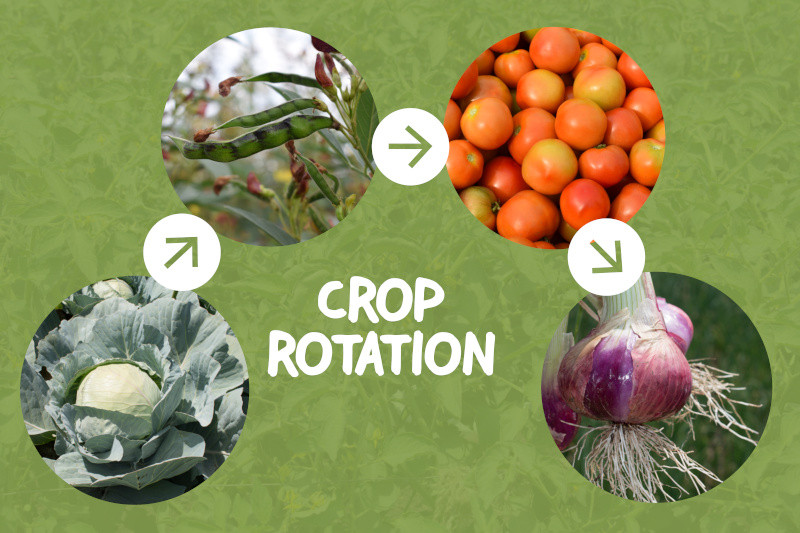Starting a vegetable garden

Have you always wanted a vegetable garden but just don’t know where to start? Just follow the steps below to prepare your vegetable plot now. There are suggestions below of the easiest veg to try first but only grow what you and your household want to eat. You can even decide to grow in containers on a sunny balcony if you do not have garden space.
What should I do first?
Choose a sunny location. Vegetables adore bright sunlight, so observe your garden for a while and see where it is sunny most. If you have tall, overhanging shrubs, a hedge, or tall trees that shade the area, then think about pruning them to give the mst available sunlight to your veg.
Dig out perennial weeds now, like dandelions and nettles. Then cover the area with cardboard for the rest of the winter, and everything underneath will die back, deprived of light. If you check back in a month, everything will look white and it will be super easy to dig out the top soil to get it ready for planting in spring.
What else do I need to consider?
The soil needs to be fertile Go outside and dig a handful of earth out of your garden and try to make it into a ball. If it sticks well together, it is probably clay soil, which retains moisture but it will need some compost mixed in. If your soil is sandy, it cannot be shaped into a ball, and it will not retain water but you can mix in compost to help, and also add nutrients. The ideal soil is loam, which is a mixture of silt, sand, and clay that holds water well for the roots of your vegetables and is easy to dig.
Do you have access to water? Summer vegetables like tomatoes, cucumbers, and beans guzzle up water so start saving rainwater in a butt, and make sure there is a tap located reasonably close to the veg bed. In my allotments, we have water butts every few plots but I know how arduous it can be to water a whole crop of sweetcorn in a drought, when there is a hosepipe ban so if possible, make sure water is close by.
Choosing your veg: 10 vegetables that are great for beginners.
These are my suggestions because they are easy but choose food you want to eat.
Tomatoes can be seeded indoors from March onwards to get a head start, and then planted outside when the weather is better. They need rich soil, with manure mixed in if possible. Grow bush tomatoes and they will give you lots to pick.
Potatoes are a great choice for a new plot because they are known to “clear” the ground of anything harmful. They are good for a beginner because you start with one tuber and you get a whole bag of potatoes! Potato seedling tubers are bought early, then chitted, which means little potatoes with green parts and roots start emerging. You just keep them in a shady place and allow the potato to start growing, which tells you it is viable. Then these can go directly into the soil outside in March.
Peas and beans will teach you the benefits of having “nitrogen fixers” in your selection. Their roots produce nitrogen, which is an essential element of soil for healthy plants. Leave the roots in there when the plant finishes in the autumn/fall. Both peas and beans will need some support so you will be learning valuable skills staking and tying in with these two, as well as eating fresh homegrown veg straight from the pods.
Beetroots and radishes are root crops, so the part of the plant you eat is the root. Others in this group are carrots, parsnips, turnips, and swedes. Beginners are advised to plant a row of radishes if children are in a hurry to see speedy growth. Beetroots take longer but they are well worth the wait.
Pumpkins If you have younger gardeners, these plants grow very long, and the results can be part of a home-grown Hallowe’en decoration of your house. Try to grow the largest one to enthuse the kids. You can make pumpkin soup, pumpkin pie, and even roast the seeds.
Salads are a good skill to acquire because you can grow them all year round. Summer lettuce, mixed greens, rocket, and mustard can become winter mustard and rocket, and using some form of cloche or cover on a row of greens means you could try exotic varieties like Pak Choi or Chinese Cabbage.
Spinach is available as fresh greens all year round on my allotment because I originally bought organic seeds, which love to spread and self-seed. I allow this to happen because I have a large plot and love how it spreads. On a small plot, this is a bit of a nuisance but it’s a great plant to watch go to seed so that you can learn to cut the seed heads as they develop, and save the seeds for the following year.
Chili peppers are last but not least on my list. They are so easy to grow and you can dry the peppers to use all year round. They are not frost-hardy though, so plant seeds indoors, and then you can transplant them out when the warmer weather arrives.

Vegetable Garden Planning: what is Crop Rotation?
Why is this important? Your soil can become exhausted by just growing just one plant in the same space every year. You must change the position of the plants you grow in a certain space in a cycle we call crop rotation. This also forces soil pests to move so this is a great benefit in keeping your soil healthy. Some gardeners love to plan on paper but this is where vegplotter.com is so useful! If you cannot remember where you planted something, it can tell you accurately! Signup to try our amazing Vegetable Garden Planner
Here’s a four-year planner for rotation. You can also place perennial (more than one year) plants like strawberries in their own area and leave them there for 3-4 years.
| Year | Plants | Soil treatment | Frost Hardy or not? |
|---|---|---|---|
| 1 | Tomatoes , Courgettes (zucchini) , Potatoes , Pumpkins , Squash (butternut etc) | Add manure if available.
Use fertilizer, compost, and leaf mold in winter spread at different times, if available. |
No |
| 2 | Legumes (Beans runner beans, French beans, etc) , Peas , Onions , Garlic | Add manure or fertilizer. Good drainage is essential.
All peas and beans are nitrogen fixers. |
Peas – yes Beans – no, except Broad beans. Onions, garlic - yes. |
| 3 | Cabbages, cauliflowers, Brussels sprouts, kale. The cabbage family is known as Brassicas. | Follow nitrogen fixers with cabbages and the Brassica family who love the extra goodness but do not use manure. | Yes |
| 4 | Roots: Beetroot , Carrots , Radishes , Parsnips , Turnips , Swedes etc | Do not add manure or the roots will fork and grow in strange ways!! Mulch with leaf mold or compost before sowing seeds. | Yes |
| Perennials | Asparagus , Raspberries , (Black/red) Currants , Blackberries , Strawberries | These stay in the same bed for several years. Add manure at the start and then mulch every year with compost, ash, or manure, if available. | Yes |
We will look at Square Foot Gardening in detail next week but in the meantime, ensure that your soil is fertile by starting a compost heap to feed it.
Gardening Tips for the winter
- Start a compost bin or heap. You can recycle all your garden and kitchen waste. The most fertile soil is what you need to grow vegetables, and homemade compost is packed with nutrients and microorganisms that will help to increase the fertility of your soil over time.
- Save your rainwater by installing water butts.

Conclusion
This brief guide will help you to get your vegetable garden started now, by helping you to locate your growing area in a sunny location with access to water. Next week, we will look at how to plant vegetables in a small space.


